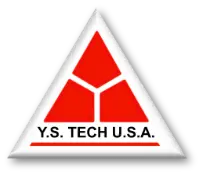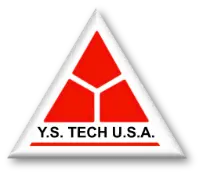Airflow optimization: Is your EV charging station really keeping its cool?
If you’re in the electric vehicle (EV) industry, you’ve probably asked yourself this question more than once. With the global push towards greener, more sustainable transportation, effective thermal management is no longer just a technical concern—it’s the backbone of any reliable EV charging station. But let’s get one thing straight: thermal management is about far more than just slapping on a fan. It’s about smart, strategic airflow optimization. And if you’re not thinking about airflow, you’re already behind.
We all know that keeping EV charging stations cool is key to their performance and longevity. A well-optimized station doesn’t just prolong battery life; it boosts overall system efficiency. So, how do you make sure your charging station is breathing efficiently? Let’s break down the essential dos and don’ts of thermal management.
Do's in airflow optimization
❶ Implement smart airflow optimization technologies
Think of your charging station like a data center. You wouldn’t let that overheat, would you? Smart airflow optimization technologies can work wonders, ensuring air is directed exactly where it’s needed to keep your systems cool and running efficiently.
❷ Arrange equipment in a hot-aisle/cold-aisle configuration
This strategy is borrowed from data centers for good reason. By creating distinct pathways for hot and cold air, you keep the airflows from mixing. The result? Much more effective cooling with less wasted energy.
❸ Implement cabinet airflow packages
Managing airflow at the cabinet level is crucial. Bypass and recirculation problems can severely undercut your cooling efforts. With cabinet airflow packages, you ensure that cool air is reaching the right places, preventing hotspots and inefficiencies.
❹ Identify and address cooling issues systematically
Don’t just slap on a band-aid fix. Take a systematic approach: seal gaps, use blanking panels, and optimize your cooling unit placement. By doing so, you’ll improve overall cooling efficiency and avoid recurring issues.
❺ Understand the impact of site changes on cooling
Equipment upgrades or changes in usage patterns can dramatically affect your station’s cooling performance. Stay on top of these shifts and tweak your airflow strategy accordingly to maintain efficiency.
Don'ts in airflow optimization
❶ Do not neglect the importance of reliable operation
Chasing energy savings is tempting, but never at the cost of reliability. A dependable charging station is non-negotiable, and your optimization efforts should enhance that reliability, not compromise it.
❷ Avoid overlooking a comprehensive analysis of cooling methods
Air isn’t your only option. Liquid cooling, phase change materials, and thermoelectric methods each offer unique benefits. A thorough analysis will help you choose the right one for your specific needs.
❸ Do not mix hot and cold airflows
It may seem obvious, but this common mistake can lead to inefficiencies and dangerous hotspots. Keep your hot and cold air separated to maintain optimal cooling.
❹ Do not ignore the cabinet level in airflow management
Effective cooling starts at the cabinet level. Ignoring airflow here is a missed opportunity to prevent issues that could affect your entire system.
❺ Do not underestimate the need for regular monitoring and adjustments
Thermal management isn’t a one-time task. Keep an eye on your system and make adjustments as conditions change to ensure it’s always performing at its best.
Optimizing airflow in your EV charging station isn’t just about meeting industry standards—it’s about setting new ones. At YS Tech, we’re here to help you stay ahead of the curve with advanced thermal management solutions. So, the next time you’re thinking about your charging station, ask yourself: Is it breathing as efficiently as it could be?
Because in the race toward a sustainable future, every breath counts.



